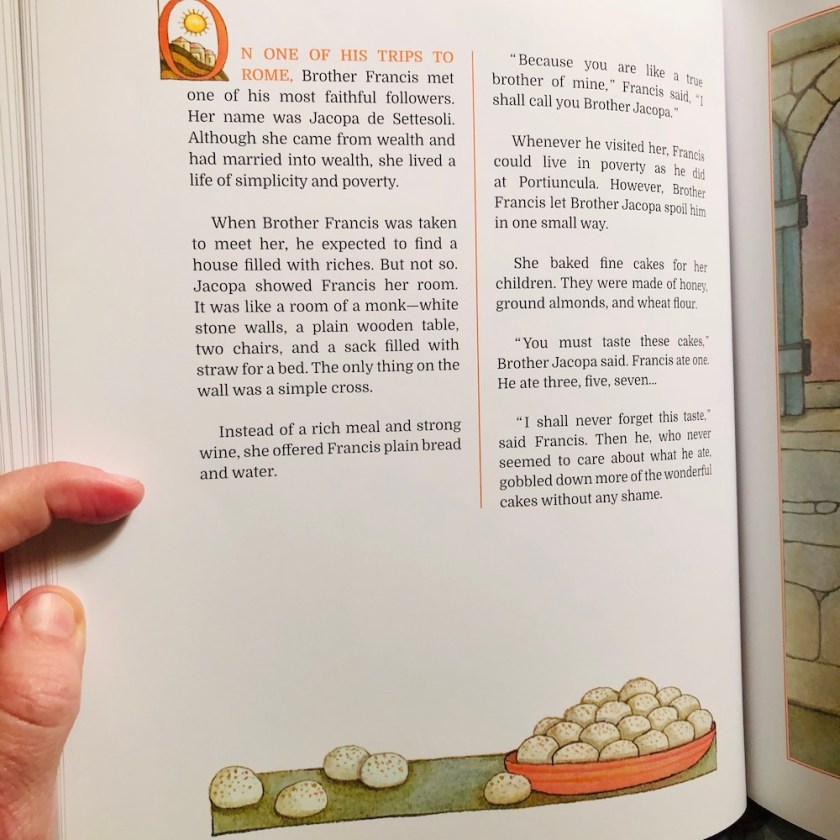Mattie Karr wanted to be an infiltrator. The 28-year-old Kansas native had big dreams of traveling to Hollywood and stealthily planting spiritual seeds in the work she did, smuggling religious themes into mainstream stories and animation.
“I loved the idea of being incognito with my art. I could be this Catholic evangelizing spy, almost,” she said.
It didn’t work out, and she is so glad.
First of all, she loves living in Kansas and loves the parish where she just finished a massive commission, three years in the making. It consists of two 15-foot high triptychs that bring color and warmth to either side the rather austere apse of Holy Name of Jesus in Kansas City.
Second, she found that she couldn’t stop making religious art if she tried. “As I grew in my faith, I couldn’t help it. The art just came out and it was all religious, mostly Mary. I couldn’t stop drawing Mary,” she said. The big shift came when she went on retreat, and some people prophesied over her, saying that God was calling her to do something and that she needed to be brave and step out.
“It was very clear he wanted me to leap,” she said. A week later, she did, quitting her job in sales, and launching her full-time career as an artist. Karr paints and draws sacred and liturgical art and also does commissions with specific religious themes, depicting spiritual tableaux that are particularly meaningful to her patrons.
Now that she’s surrendered to the idea of being a sacred artist, she said life has gotten so much easier.
“The images come a lot quicker. It doesn’t feel like as much of a struggle,” she said. “I appreciate wearing my religion on my sleeve in my business. It’s much more freeing.”
Karr said she once met a priest at a wedding, and he was adamant that she is an iconographer. Although Karr has done a painting that, at the request of a client, borrows some elements of traditional iconography, most of her work is in a very different mode. But the priest insisted, “Your spirituality is that of an icon painter. I can tell you pray through it.”
And this is so.
“Even if I’m not consciously praying, I’m praying,” she said. “Even in artist mode, I’m aware of the Holy Spirit.”
When she’s working with a client to develop a commissioned piece, she prays with them, and asks the Holy Spirit to give her an image for them. This is what happened when a client asked her to portray Mary, Undoer of Knots.
She collaborated with a client whose wife is a mental health counselor and had a recurring dream of Mary dressed in work clothes, diligently unbinding the tangles in a long ribbon that shines in the light falling on her shoulders.
Karr said that, although the image was made for one client, it often brings people to tears, even if they previously knew nothing of this traditional title of Mary.
“I’ve seen how much God can speak through these images. Beauty has this quality of stopping people in their tracks and making them pay attention,” she said. It breaks through the silence, even a silence we may not be aware of.
“So many people in their relationship with God don’t think he has much to say to them. Even devout Christians don’t experience the love of God in their lives,” she said. But sometimes beauty can speak to them with God’s voice.
“It’s a collaboration with the Holy Spirit. I’m always asking,” she said.
Sometimes that collaboration seems to come in the form of failure…. Read the rest of my latest monthly artist profile for Our Sunday Visitor.
***
This is the eighth in a monthly feature on Catholic and Catholic-friendly artists I’ve been writing for Our Sunday Visitor.
Previous artists featured in this series:
Jaclyn Warren
Daniel Finaldi
Gwyneth Thompson-Briggs
Chris Lewis
Kreg Yingst
Sarah Breisch
Charles Rohrbacher
If you know of (or are) a Catholic or Catholic-friendly artist you think should be featured, please drop me a line! simchafisher at gmail dot com. I’m not always excellent about responding, but I always check out every suggestion. Thanks!

































